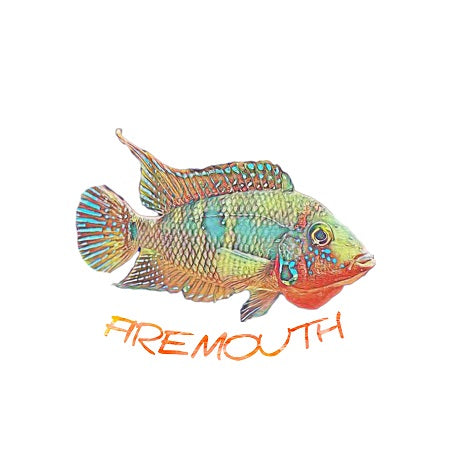Collect your botanicals
Compartir
Aquarium leaves and botanicals that you can collect yourself
Apple tree
Red Hazel Leaves
100% leaves of the Red Hazel (Corylus sp.). Hand-selected Red Hazelnut Leaves, dried, and packed in a resealable bag for ideal storage. These leaves are harvested from Red Hazel bushes in the northern forests and edges of the Black Forest in southwestern Germany and then carefully air dried.
As they are harvested directly from the trees and not taken from the ground, optimal quality is guaranteed.
Magnolia (Magnolia sp.)
Obovate leaves with mucronate apex and smooth edge.
Colors in autumn: pale yellow and brown. These trees are deciduous and lose their leaves relatively early in autumn. They grow mainly in parks and gardens.
The leaves are comparatively thin and snails, shrimp, crayfish and crabs really like to eat them. Snails, shrimp, crayfish and crabs like to eat them, especially shrimp, which may need a few days to start feeding on them.
Horse chestnut (Aesculus sp.)
Feather-shaped leaves with 5 to 11 blades and a serrated to toothed edge.
Colors in autumn: shades of yellow and brown. These trees and shrubs are deciduous and lose their leaves early in autumn. The leaves of the Horse Chestnut tree can fall even early because the moth larvae pierce the leaves of the Horse Chestnut tree. Such leaves have dark brown dead areas. They can be food anyway, the larvae inside the leaves are a feast for our invertebrates.
The Horse Chestnut (Aesculus Hippocastanum)
It grows predominantly in forests as well as in parks and large gardens and those of small cultivation are often used as ornamental shrubs in gardens.
The Horse Chestnut prefers moist substrates. The leaves are comparatively thin. Snails, crayfish, crabs and shrimp like to eat them, especially shrimp, although it would take a few days before it accepts it.
Snails, shrimp, crayfish and crabs like to eat them, especially shrimp which may need a few days to feed on them.
Linden (Tilia alba, T. cordata, etc.)
From the Malvaceae family, linden trees or tilias are made up of several species of trees with broad, thin leaves. They have mucilage in their composition that are very beneficial for the digestive system of invertebrates and fish, at the same time they have positive effects on the system. respiratory mucosa.
They have several types of terpenes and flavonoids, limonene, eugenol and caffeic acid, among other substances.
Most of them promote the correct formation of hepatogastric secretions or have an important biological role as antioxidants. The active compounds in linden work as a natural diuretic.
Recent studies indicate that in suitable doses they act as anti-cancer agents. But we should not abuse these leaves because their compounds, in high quantities, can cause health problems in invertebrates. Added occasionally they can produce great benefits for our animals.
Fagaceae
In this family we find several species such as beech (Fagus sylvatica), oak (Quercus ruber) or holm oak (Quercus ilex).
Although beech leaves are soft and thin, those of oaks and holm oaks are more resistant to decomposition, which is why they will remain in the aquarium longer. Fagaceae provide our tanks with a large amount of the flavonoids catechins quercetin and tannins (such as gallic acid), which gives a yellowish, brown or brownish color that stains the water.
Tannins are phenolic compounds, with mainly astringent, anti-inflammatory and antioxidant properties. Catechins and quercetin have some of these properties and are immunostimulant. Tannins decant poisonous substances such as alkaloids and metallic salts on the surface and thus prevent their absorption.
They also have the property of being antibacterial, preventing the rapid reproduction of pathogenic organisms.
Maples (Acer granatense, A. campestris, A. monspessulanum, etc.)
They are from the Aceraceae family and have thin palmate and lobed leaves. Its properties are not very noticeable but they are used as an astringent.
At the same time, it provides organic matter whose decomposition is relatively fast compared to other more resistant leaves, making it a desired food supply for many invertebrates. It is a visual contribution to the aquarium (due to its beautiful reddish or ocher toned leaves) more than a nutritional or medicinal contribution.
Birch
Obovate leaves with a delta shape, an acuminate apex and a serrated edge.
Colors in autumn: intense yellow. The bark of the trunk is strikingly white, especially in younger trees. These trees are deciduous and lose their leaves well into autumn.
You can find them in open woodlands, at forest edges, as well as in parks and gardens. Prefers sandy soil. Compared to other leaves, Birch leaves are relatively thick and decompose more slowly.
The green leaves of the Birch are used in aquariums with fish with ulcers and tumors and can be used in invertebrate aquariums as a preventative against bacterial and fungal infections. The brown leaves are used as a staple food.
Is
The leaves are obovate ending in an acuminate apex, generally with a smooth edge. Colors in autumn: shades of yellow and brown.
Beeches are deciduous and lose their leaves towards the end of autumn. These often remain on the trees until spring. They are typical forest trees, but they are also used in parks.
Some small growing Beeches are suitable for use in gardens. The leaves of the Beech are not particularly thin compared to those of other trees.
Snails, shrimp, crayfish and crabs really like to eat them, especially shrimp, which may need a few days to start feeding on them.
The brown leaves of autumn are used as a staple food.
Oak (Quercus sp.)
Quite long lobed leaves, lobes rounded or with acuminate apex, with a smooth edge.
Colors in autumn: yellow and brown tones (Northern red oak: reddish). These trees are deciduous and lose their leaves well into autumn.
The Oak is a typical forest tree, Northern Red Oaks are also used in parks. Oaks are rarely found in gardens because they grow very tall.
Compared to other trees, Oak leaves are somewhat thick and decompose slowly.
Snails, shrimp, crayfish and crabs like to eat them, especially shrimp, which may need a few days to start feeding on them. The leaves contain many tannins which are very beneficial for shrimp, crayfish and crabs.
The water may take on a slight yellowish tint after the Oak leaves have been placed in the aquarium, this is not dangerous for the animals in there. The brown leaves of autumn are used as a staple food.
Alder (Alnus sp.)
With rounded leaves with a truncated or even emarginated end (then the leaf is almost heart-shaped) and with a serrated edge.
Color in autumn: shades of yellow and brown. These trees are deciduous and lose their leaves well into autumn.
Alders love moist soil and often grow near bodies of water. Due to this location preference and large size, they rarely grow in gardens.
The cones of Black Alder are known as an aquarium additive, but the brown leaves can of course also be used.
The brown leaves of autumn are used as a staple food.
Common fig (Ficus carica)
Large 3- to 5-lobed leaves with an irregularly serrated edge. They remain green until the first frost and then they begin to fall. In frost-free regions, these small trees are always green.
They are native to the Mediterranean. In colder climates, it is a garden plant for protected areas. Shrimp, crayfish, crabs and snails eat its relatively thick leaves. Dried leaves are food (remove them from the aquarium after a day at the latest).
Hornbeam (Carpinus sp.)
With obovate and grooved leaves with a double serrated edge and ending in an acuminate apex.
Color in autumn: intense yellow and shades of light brown. These trees are deciduous. Its autumn leaves remain on the tree until late in spring.
They grow in wide open forests as well as in parks and gardens. Very popular tree on the edge of the forest. The leaves are comparatively thin and crabs, crayfish, shrimp and snails like them.
The brown leaves of autumn are used as a staple food.
Walnut (Junglans regia)
From the Junglandaceae family, it is a tree from cold areas of Europe and Asia. Walnut leaves are abundant in tannins and flavonoids, polyphenols and fatty acids.
In the same way, it also has alkaloids that in large quantities can be toxic. One of its compounds to take into account are juglones, toxic substances that generally accumulate in the roots, but also in smaller quantities in the leaves.
The juglones paralyze the growth of plants around the walnut leaves, to avoid competition for resources.
The leaves have many essential oils and vitamins and their most important effects are antiseptic, bactericide, fungicide and antiparasitic.
Some of the substances in the leaves have antioxidant activity used in traditional medicine to regulate hepatogastric secretions, generating visible benefits at the digestive, cardiovascular, endocrine and dermatological levels.
Cherry-Plum-Peach-Apricot-Almond (Prunus sp.)
Leaves ovate-lanceolate, lanceolate-narrow and usually with a serrated edge.
Colors in autumn: intense yellow, orange, red, brown. Deciduous leaves representative of this genus can be used.
Be careful: even though the Cherry Laurel is also a Prunus, its leaves cannot be used in the aquarium.
Many species of this genus are plants from ancient cultures and grow in gardens, plantations and also in nature. The leaves are comparatively thin and snails, crayfish, crabs and shrimp like to eat them.
Be careful, fruit trees are often sprayed with pesticides against all kinds of diseases and parasites, only use the leaves if you are 100% sure this is not the case! Snails, shrimp, crayfish and crabs like to eat them, especially shrimp, which may need a few days to start feeding on them.
Keep in mind
Although its use in aquariums is not widespread, there are several species of trees and plants that can provide some benefits and properties to aquarium water.
For example, chestnut leaves (Castanea sativa), a fagaceae slightly rarer in our area, which add many tannins to water and have been used in traditional medicine as astringent, antidiarrheal, antipyretic or anti-inflammatory.
The leaves of the Rosaceae family (such as almond, pear, apple, brambles, roses, etc.) with a fairly rapid decomposition and provide organic matter that is easily absorbed by crustaceans and gastropods, are other options. Economical for the aquarist.
In our typical crops, although it is a species native to Asia, we have the loquat (Euryobotria japonica), in which its young leaves have small amounts of cyanide, which disappears when the leaves are mature and dry.
Currently, anti-cancer substances and other compounds have been found in this species that in theory promote the development of hair cells.
Another of them from the mulberry tree (Morus alba). It is easy to obtain, its large, thin, soft leaves, which when dried naturally provide ideal food for invertebrates. With similar properties we have the leaves of vines or vines (Vitis vinifera).
Also even leaves such as those of the willow (Salix sp.), the poplar or the poplar (Populus sp.), from the Salicaceae family, or the hazel (Corylus avellana) from the Betulacea family. The elm (Ulmus sp.) or the camphor tree (Cinnamomum camphora), trees of the Ulmaceae and Lauraceae families, can also be beneficial for invertebrates.
Barks
Most of the barks of trees named above have the same or better properties than their leaves, such as oak, linden, maple or walnut, among others. Adding small amounts of bark of these species to aquariums releases tannins in the long run, the benefits of which have been more than previously demonstrated.
Thanks for reading us,

